Coral Reef Destruction
Coral reefs all over the world are in imminent danger due to various human influences and yet the rapid decline of coral reefs are rarely ever part of the conversations surrounding climate change or ocean pollution.
Our goal as a group was to raise awareness towards the issue, as it seems that very few people are actually aware of the consequences the extinction of corals would have on our planet.
25% of marine life and around 500 million people are dependant on coral reefs, which is why the continuing destruction of coral reefs will lead to disastrous consequences.
Less than 1% of the ocean floor is covered by corals and yet they contribute to around 50% of the oxygen we breathe.
It’s estimated that coral reefs prevent around $94 million of flood damage every year while generating $375 billion in tourism directly related to corals
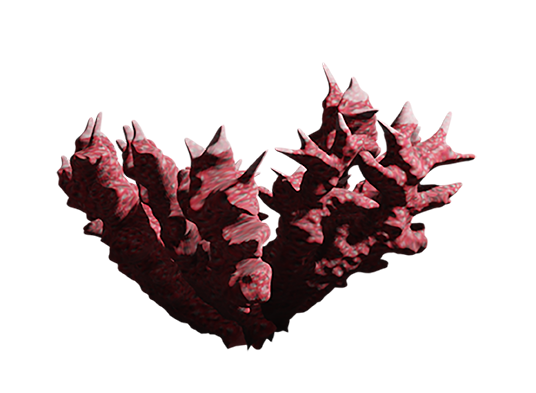
Why are Coral Reefs in danger?
- rising water temperatures due to climate change
- scientists believe that the oceans have absorbed nearly half of the CO2 produced by human action since the dawn of the industrial revolution, which leads to the acidification of the ocean
- water pollution caused by human activities and industry
A coral’s stages of decay:
Bleached corals and coral reefs are a sign that the corals are really stressed by external influence.
Especially the symbiotic algae which lives in a corals cells, is really sensitive to changes of the water quality and increasing water temperature.
Because of climate change and the resulting warmer oceans as well as water pollution caused by human activities, the algae starts to produce toxic substances and gets rejected by the coral. Because the algae is responsible for the colour of the corals, they turn white.
If the algae is not coming back within the next couple of weeks, the corals die because they can’t produce their needed oxygen and feed themselves.
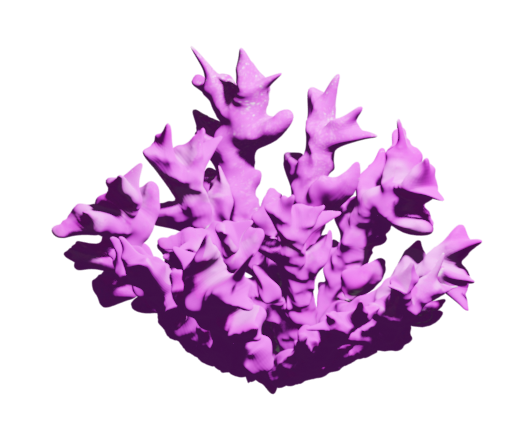
If the symbiotic algae does not resettle in the cells of the corals after a bleaching event, the coral has no ability to provide oxygen or enough nutrition for itself.
After a couple of weeks, the coral dies and starts to rot.
When this happens to a lot of corals in the same area and a complete reef dies, this can have drastic consequences for the marine wildlife in this area.
Because they loose their habitat and hunting ground, a lot of marine species could possibly become extinct in this area or have to find new habitats for themselves. When this event happens at a lot of reefs all around the world, a lot of the underwater ecosystem gets destroyed and nearly a quarter of all marine species is threatened with extinction.
Another consequence of the destroyed reefs is the lack of protection from the tides for islands and coasts next to the reefs. This also affects human settlements and is going to cause severe damage to a lot of the ocean coasts all around the world.
What are Coral Reefs?
Corals live in the oceans all around the globe.
They are marine animals which settle in big colonies called coral reefs and never change their location. When these corals are healthy, they appear in a wide variety of colours caused by symbiotic algae that lives in the cells of the corals. Without this algae, the corals wouldn’t be able to survive because they need these symbionts as an oxygen producer.
Healthy coral reefs are the habitat for around one million marine species and the hunting area for several others. Because of that the coral reefs are considered the second largest ecosystem on earth after the rainforest.
Destruction by the fishing industry:
-
- fishing industry uses big trawl nets to catch fish
- these nets are dragged upon the bottom of the ocean
- if there are corals, they get ripped of the ground
- they can’t fix themselves to the ground again and die
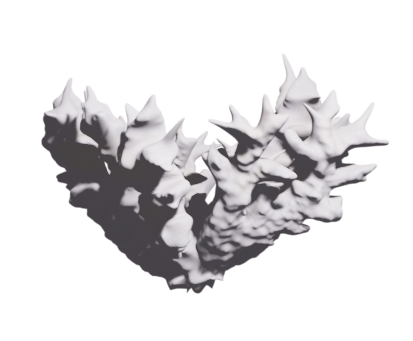
Glowing corals were first documented by scientists in 1990. They found out that some of the bleached corals started to glow a couple of weeks after losing all of their symbiotic algae.
A lot of theories were published why the corals are starting to bleach after coral bleaching events but still there is no evidence which of those theories actually is the right one.
The most common belief is, that the corals start to glow in a last desperate attempt to try to get the algae to come back. This algae is really light-sensitive and has no real chance to return to the corals because they do not provide them with enough cover from sunlight once they have bleached.
Many scientists think that the fluorescent substance which makes the corals glow, has the function of a sunscreen and should give the algae the possibility to resettle again.
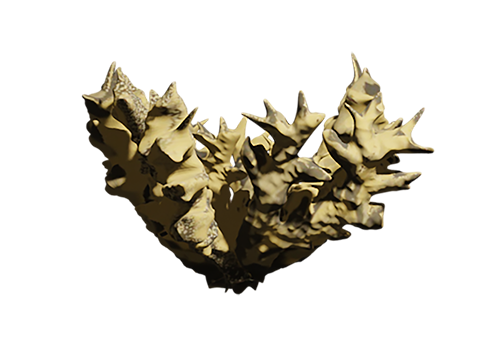

Our Target Audience
We are targeting students and young adults from 12 to 35 years old as those will be the the ones suffering the consequences if corals go extinct.
Our campaign is using English as main language as it’s the most versatile language and it’s spoken by the majority of people.
We want to reach especially those who line inland and don’t have a direct connection to the ocean, as those are the people who are most likely unaware of the destruction of coral reefs.
Our Campaign
Our concept is a crossmedial awareness campaign called “Coral Friends” with different channels:
- Central landing page with information
- Social media content (Instagram and YouTube)
- School packages with informative material
All of these channels are connected to each other and are able to visualize the problem of coral reef destruction.
The focus of our campaign:
Awareness: Raise awareness for coral reef destruction and its consequences on marine life, among our target group.
Information: Give people detailed information about the problem with our website and other channels.
Possibilities: Guide our target group to organisations that actively work on the preservation and restoration of coral reefs and present them with possibilities how to become active.
Our Goal
- Get as many people as we can to know about the problem coral reef destruction and its consequences on marine life.
- Show them what organisations and associations they can join or contact to do something about it.
Our different channels
The central Website:
- Landing page as our central tool of information about the problem and link to other channels like Instagram and Youtube
- 3D models of corals in degrading stages to visualize the problem
- Promoting Coral Gardeners and other organisations that actively do something about the problem
- Additional information and facts for the visitor and what they can do to contribute and help
- Our goal is to reach a much wider audience we can by also promoting our page on our other channels and events
- mainly informative, less emotional than the social media accounts
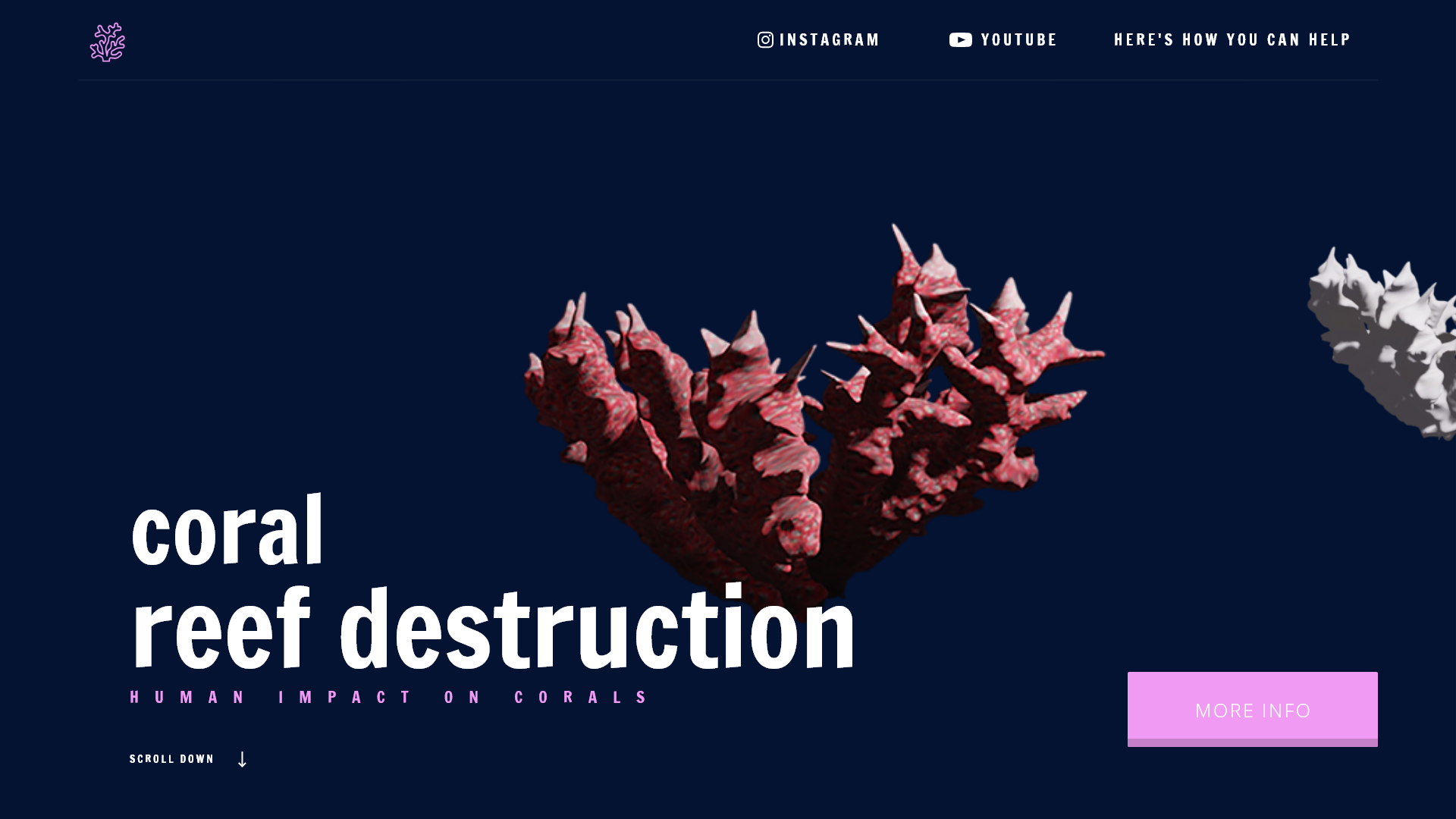
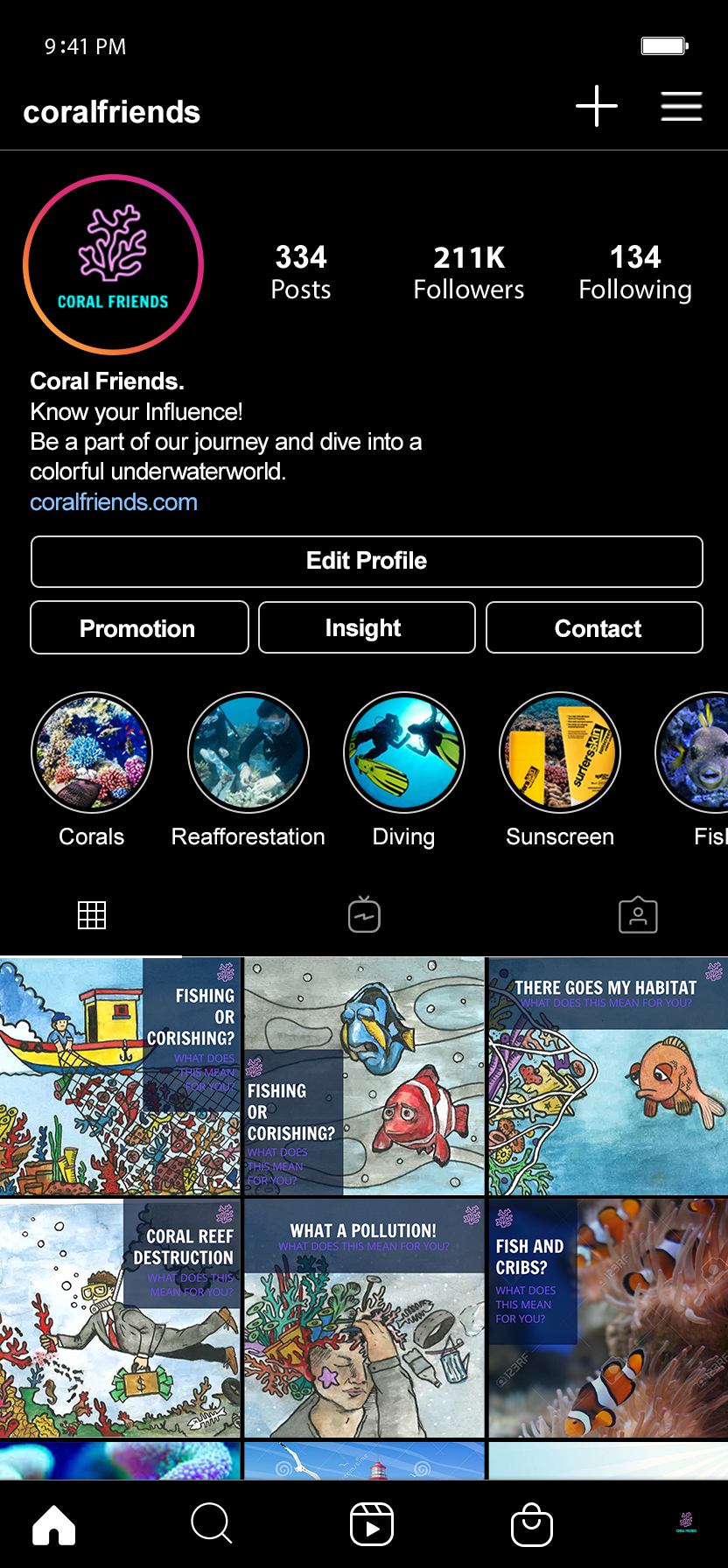
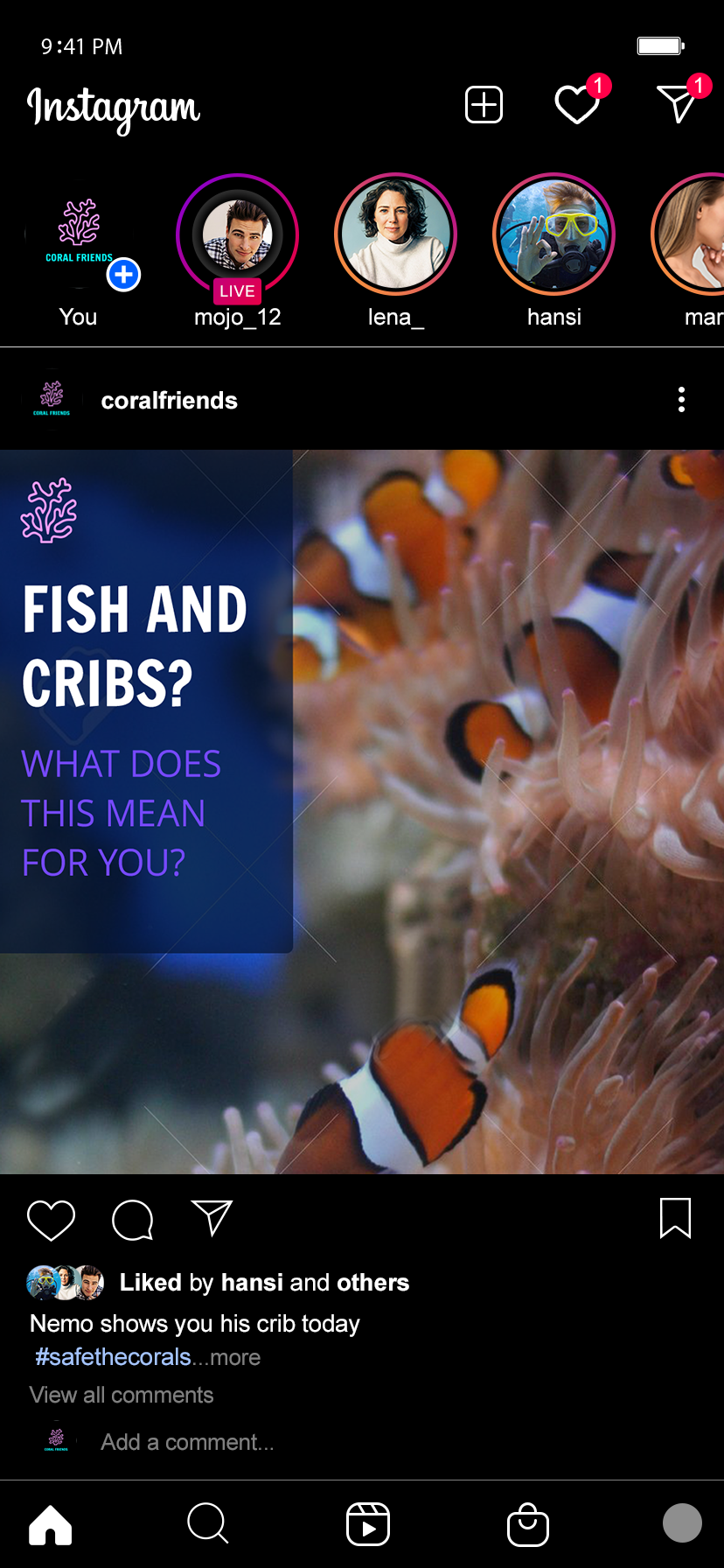
Instagram:
- Unified visual language
- hand-drawn pictures
- the most important and up-to-date information is stored in the highlight buttons
- among other things, the same topics as on YouTube are used and referred to
YouTube:
- Detailed text and topic information
- Some videos are divided into episodes if they cover the same topics
- Images have other formats
- Imagery is always the same

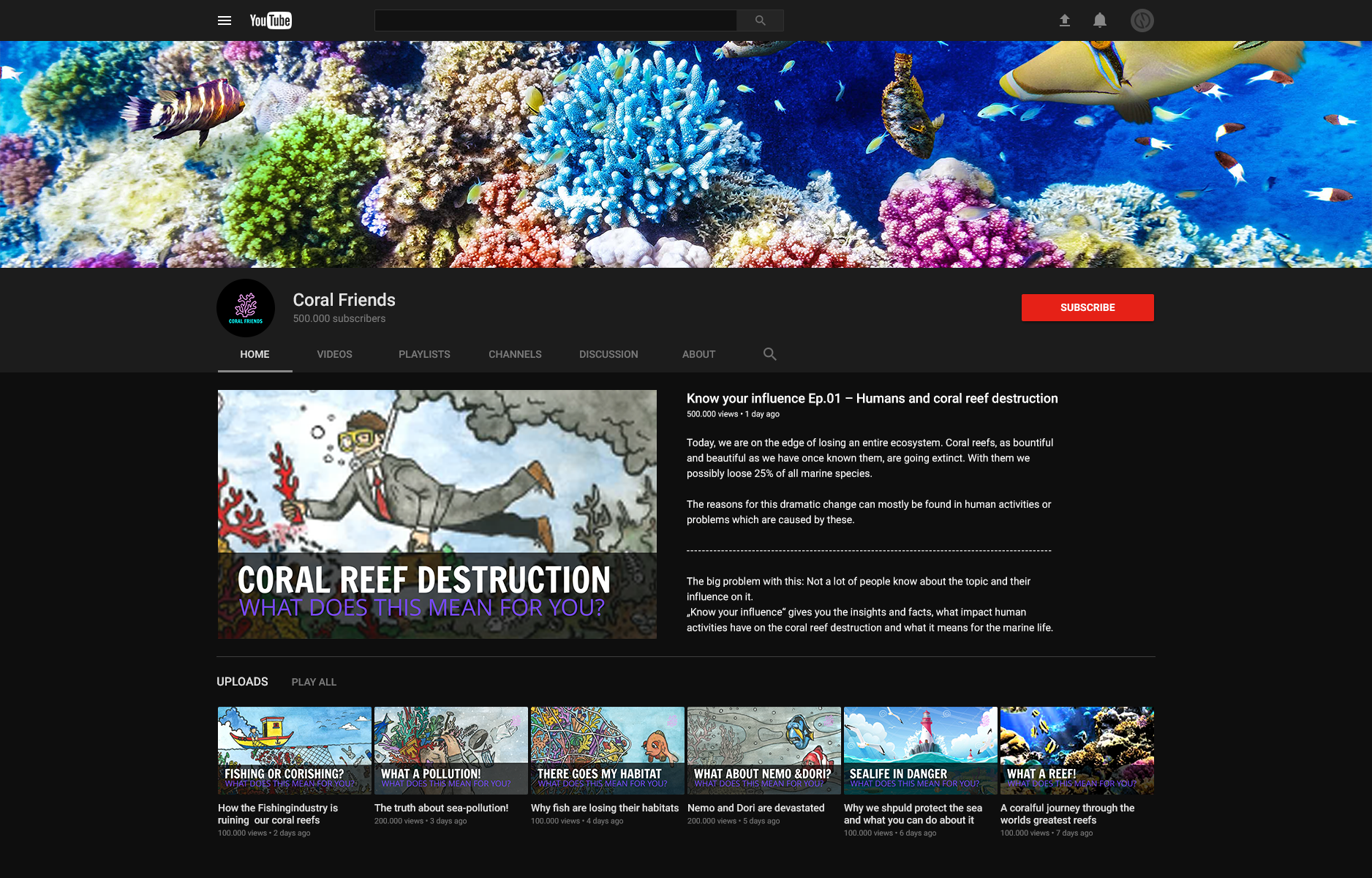
School Events:
- Theme days in schools- A Coralful Day
- sustainable educational packages are the basis for coral destruction theme days
- Content of the package will include:
- 3D models of corals in four different stages of decay made in sustainable materials like wood,PLA(made from cornstarch)
- tutorial on how to do the theme day and use the package
- Link to our landing page
- Give young people insight to the problem of coral reef destruction and show them what effects this has on our planet. Show them where they have to go to do something about it
- Potentially get sponsors that could finance the project
- Spread the project across a lot of countries
- Present the concept of this kind of project to the other organisations around the world so they could maybe do the same